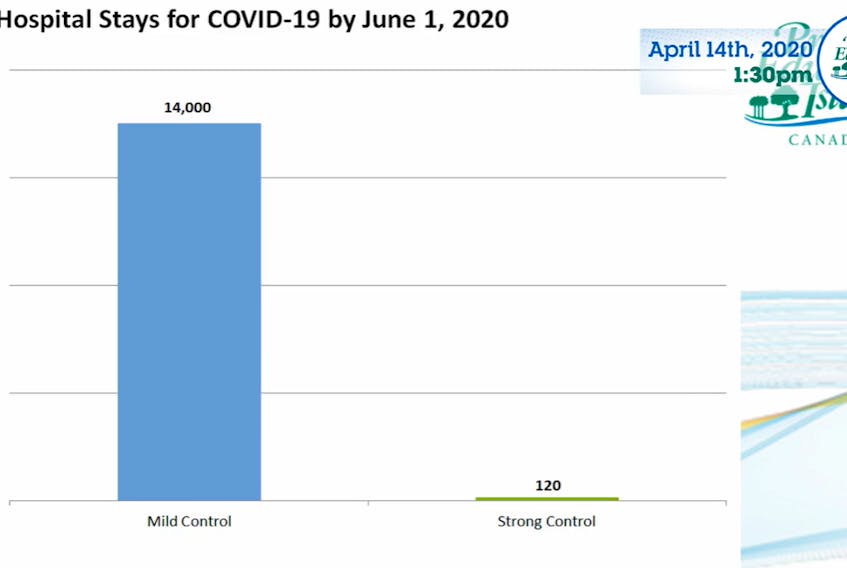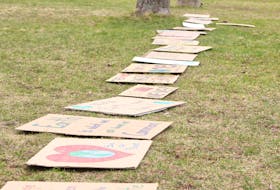A letter from W. Blair MacDonald (Our government response to COVID-19, May 4) questioned the accuracy of the province’s projections of deaths and COVID-19 cases on P.E.I. The numbers were released to the public April 13. The good news is that these terrifying figures are way off the mark. They indicate that by June 1, with “mild controls” the province could expect an astonishing 14,000 cases of COVID-19 requiring hospitalization and 900 deaths. With “strong controls” the number requiring hospitalization drops to 120 with nine deaths.
These projections are based on an assumption that the province had 200 people with COVID-19, even though it was apparent by mid-April that this was not the case. The most recent data show the province with only 27 cases of whom all have fully recovered, and all contracted the virus off-Island. Of the thousands of persons tested on P.E.I. all have been negative. There have been no cases requiring hospitalization and no deaths at all.
The province’s projections also have a serious weakness in that they do not distinguish COVID-19 cases in long-term care facilities from the population at large. Even by mid-April it was clear that the main problem areas in B.C., Quebec and Ontario were in these old folks homes. Today we know that more than 80 per cent of all Canadian deaths from COVID-19 have taken place in these homes and the situation in Halifax shows how quickly the situation can develop. Even with strong control measures in place the number of cases and likely deaths would sky rocket quickly if COVID-19 emerged in P.E.I.’s long-term care facilities.
Looking at recent statistics for Canada, as of May 11 there were 1,136,000 people tested of whom 68,500 showed positive. Of that number 4,870 unfortunately died. This is a ratio of 7.1 per cent. By my estimation 1,000 of these deaths were from the general population, not in long -term care. Using these data, if you are found positive and are not in a long-term care facility, the probability of dying is in the order of 3 per cent. Naturally a person’s age and general health are important factors. Using these estimates indicates that in this province we might experience one COVID-19 death from the general population if considerable more positive cases turn up, and if no positive cases occur there will be no deaths from this virus here.
This is a far cry from the extraordinary projections published by the province, which are based more on conjecture than actual data. That is the good news.
The bad news is that the situation outside the province remains dire. In the United States alone, there are more than 1.7 million cases as of May 25 and 99,921 deaths. The epicentre continues to be New York City though rates of infection in New Jersey, Connecticut and other states with major cities are also high.
We are told that the development of a vaccine may take many months or even years to occur. So we may be living with the threat of this ugly virus for quite some time. Therefore governments should adopt policies which are appropriate and tolerable to the general public for the longer term. Given the present evidence that COVID-19 is not present in P.E.I., the need for business and government closures, as well as the shutdown of the P.E.I. National Park, appears unwarranted at the moment. However until a cure is developed for this virus, the need for strict controls for entry to P.E.I. is essential.
If tests indicate in the future that community transmission is occurring, then a quick response will be necessary.
John Palmer of West Covehead is a retired chief statistician with the provincial treasury.









